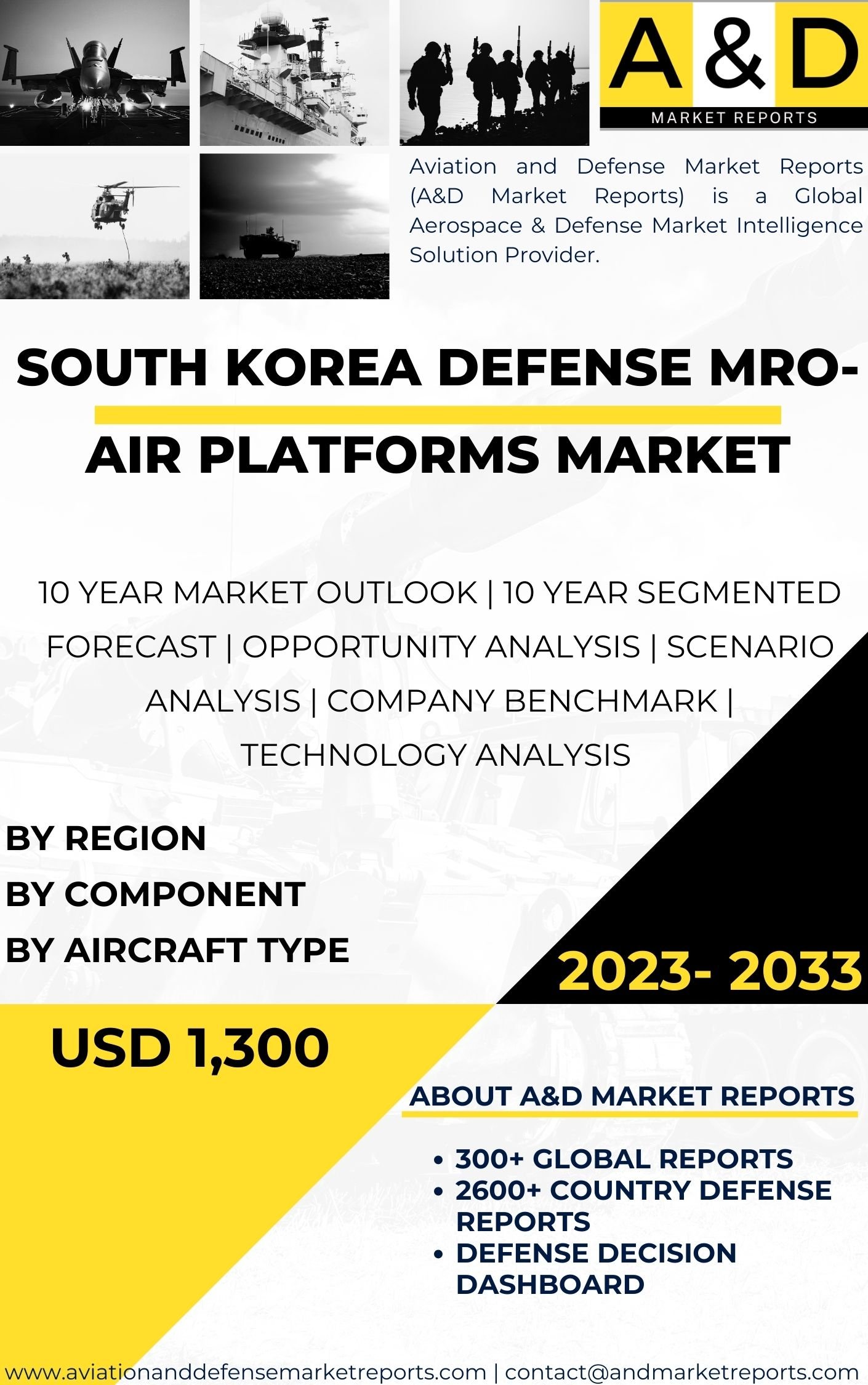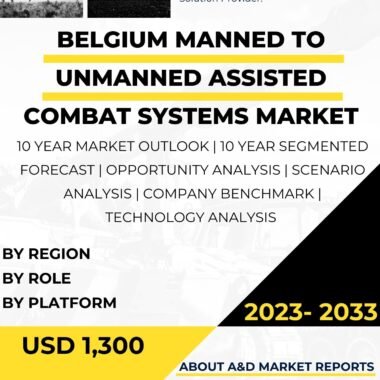Description
The South Korea defense Maintenance, Repair, and Overhaul (MRO) market for air platforms is a critical and dynamic segment within the nation’s defense industry. MRO services are essential for ensuring the continued operational readiness and longevity of military aircraft, helicopters, and unmanned aerial vehicles (UAVs). This article provides an in-depth analysis of the current state, growth drivers, challenges, key players, and future prospects of the South Korea defense MRO – air platforms market.
The historical context of the South Korea defense MRO – air platforms market can be traced back to the nation’s efforts to modernize its defense forces and strengthen its air power capabilities. As South Korea faced complex security challenges and the need to maintain a highly capable air fleet, the importance of reliable MRO services became evident.
In the current landscape, the South Korea defense MRO – air platforms market has witnessed significant growth and diversification. It encompasses a wide range of MRO activities, including airframe maintenance, engine overhauls, avionics upgrades, and component repairs, conducted on various air platforms employed by the South Korean Air Force (ROKAF) and other defense agencies.
One of the primary growth drivers for the South Korea defense MRO – air platforms market is the country’s focus on indigenization and developing domestic MRO capabilities. The government’s commitment to fostering domestic defense industries has led to increased investments in research and development, driving innovation in MRO technologies and practices.
Moreover, with the increasing complexity and cost of modern military aircraft and helicopters, MRO services have become even more critical to ensure optimal performance and cost-effectiveness over the platform’s life cycle.
Furthermore, South Korea’s strategic location in Northeast Asia and the presence of potential adversaries highlight the importance of having a robust MRO infrastructure. Efficient and reliable MRO services are essential for maintaining high operational availability, safety, and combat readiness of the air fleet.
The South Korea defense MRO – air platforms market also benefits from the nation’s strong manufacturing and engineering capabilities. With a well-established aerospace industry and expertise in precision engineering, South Korea is well-positioned to conduct advanced MRO services on complex military aircraft and platforms.
Additionally, strategic collaborations with international MRO service providers and OEMs (Original Equipment Manufacturers) have been instrumental in accessing advanced technologies and expertise. Partnering with established global companies allows for technology transfer and enables South Korea to adopt best practices in MRO operations.
However, the market also faces several challenges. One of the primary challenges is the constant need for continuous improvements in MRO practices and technologies. As aircraft technology evolves rapidly, MRO providers must stay abreast of the latest developments to support the ever-changing air platforms effectively.
Moreover, the defense MRO – air platforms market is highly competitive, with international MRO companies offering comprehensive services. To maintain competitiveness, South Korean MRO providers must focus on specialization and develop niche expertise in certain aircraft types or systems.
Additionally, the increasing complexity of military aircraft and the stringent regulations governing defense MRO activities demand a highly skilled and qualified workforce. The shortage of specialized technicians and engineers in the MRO industry may pose a challenge to expanding the market’s capacity.
To address these challenges and ensure sustained growth, South Korea’s defense industry must prioritize investments in training and education for MRO technicians and engineers. Establishing partnerships with educational institutions and international MRO organizations can also enhance the local talent pool.
The South Korean government’s continued support for the defense MRO – air platforms market is crucial for promoting growth and innovation. Financial backing for MRO infrastructure development, research and development initiatives, and procurement programs for MRO services will drive the adoption of state-of-the-art technology in defense MRO activities.
Moreover, fostering strategic collaborations with international MRO companies can enhance technological capabilities and provide access to broader markets for South Korean MRO services. Collaborating with allied nations fosters knowledge exchange and strengthens mutual defense capabilities.
In conclusion, the South Korea defense MRO – air platforms market is a critical and dynamic segment within the nation’s defense industry. Driven by the country’s focus on indigenization, developing domestic MRO capabilities, and ensuring the continued operational readiness of military aircraft, the market continues to grow steadily. However, challenges related to innovation, global competition, technical expertise, and workforce development require proactive measures from the government and the defense industry to ensure sustained growth and competitiveness in the global market. By investing in research and development, fostering strategic collaborations, and promoting a skilled workforce, South Korea can strengthen its position as a key player in the global defense MRO – air platforms market and enhance its overall aerospace capabilities.




